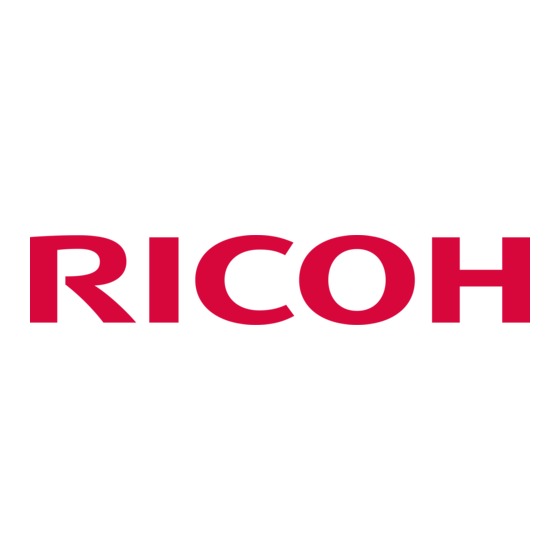Ricoh Aficio 3260C Características Manual - Página 11
Procurar online ou descarregar pdf Características Manual para Impressora Ricoh Aficio 3260C. Ricoh Aficio 3260C 27 páginas. Sap printing
Também para Ricoh Aficio 3260C: Manual (12 páginas)

User Authentication
Several modes of user authentication are available to ensure only authorized personnel issued a valid
user name and password has access to the device and the data stored within it. There are two types of
authentication, External, which uses information from a remote server to verify users, and Internal,
which identifies users by data stored locally in the machine. As a result, the types of authentication
available to users will vary based on how the device is installed, networked or a direct PC connection.
In most cases a Hard Disk Drive on the target device is required to store the data needed for user
authentication.
External Authentication Modes
■
Windows Authentication: For customer networks using
Microsoft Active Directory servers, this mode verifies
the identity of the user by comparing login credentials
(user name/password) against the database of author-
ized users on the Windows Network Server, thus
granting or denying access to device functionality.
Using the same data that matches other areas of user
network access eliminates the need for users to
remember multiple passwords, and for IT personnel to
support another login-password system. Once access
is granted, the user's name is automatically entered in
the Sender's Name field of outgoing Scan-to-Email
jobs, providing traceability by eliminating "From" field spoofing.
■
LDAP Authentication: Uses the company E-mail server to verify authorization in a manner similar to
above, but for networks using a server other than Microsoft Active Directory. This mode permits or
denies access to the entire device; it cannot control access to individual functions.
Internal Authentication Modes
■
Basic Authentication: Limits device access by asking
for a user name and password stored in the device's
built-in address book. This allows customers to control
device/data access in non-networked environments,
and to limit access to stored files. No one without a
valid user name/password can access the machine.
■
User Code Authentication: Utilizes Ricoh's standard
User Code system to authenticate the user. The opera-
tor simply enters their User Code, which is compared
to the registered data in the device's address book. No one without a valid User Code can access the
machine. The same code can be used by multiple users to track system use by client, period, or by
job for bill-back purposes, for example.
8
